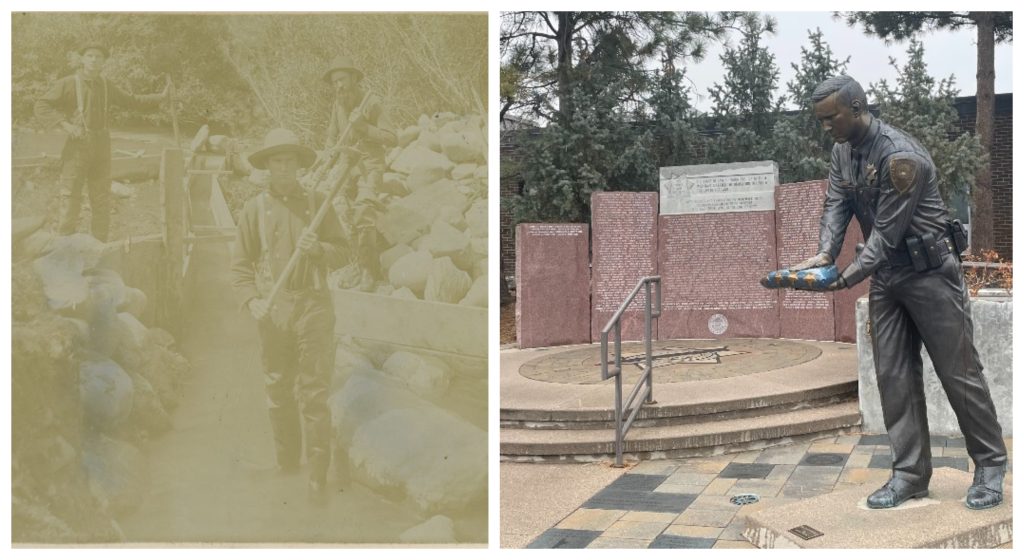“John McIlhaney. Ambushed and killed in the town of Robinson. Suspect was never captured. That’s not a story!”
That was retired Colorado state trooper Keith Dameron. For more than four decades, he has been the historian at the Colorado Law Enforcement Memorial in Golden.
And like any good cop, his research often starts with a tip.
“Jurgen Moore is a retired Denver cop who loves doing research online, so he sits there and reads old newspaper accounts,” Dameron says. “He found it (the name). So he sent it to me with some stuff I didn’t know.”
The name he got from Mohr was John McIlhaney, deputy marshal in the ghost town of Robinson.
“I’d heard about a McIlhaney killed in Robinson, so then I put it on my plate for research. But we don’t have court records from 1881,” Dameron says. “We don’t have police reports and, of course, a town that doesn’t exist doesn’t have anything. So we basically have as a newspaper story.”

Dameron’s next stop was History Colorado, where he spent hours sifting through old newspapers on microfilm. Clippings from The Leadville Herald and Rocky Mountain News confirmed the basics and the name, McIlhaney, sometimes spelled McElhaney, but little else.
“Then I went on Ancestry,” he says, referring to the genealogy website. “I lucked out. I found out about his siblings, his parent’s names, when they were born, learned he was from New Jersey. I even learned that he and the McShanes (of Leadville) were cousins. Ancestry helped me put it together for a more complete story.”
There was another gaping hole in the mystery of McIlhaney: the town of Robinson. Dameron scoured a book by Summit County historian Mary Ellen Gilliland, where she describes a boom town just south of current-day Breckenridge, with large homes, a school, and a silver mine – the same mine where McIlhaney shot and killed a foreman during an arrest.
“The newspaper accounts make it very clear that he was apparently justified in the shooting because he was acquitted,” Dameron says. “But that didn’t make some of the miners happy, and so there were threats on his life. He hid away for a few days. Maybe he even considered moving away.”
A week later, after his Old West trial, but before he could leave, McIlhaney was murdered in downtown Robinson.
“He was walking down the street with two officers, according to the newspaper accounts, when he was shot,” Dameron says. “He was shot from ambush with a Winchester rifle. No one was ever convicted. One guy was arrested and charged, and acquitted. So it’s not a complete story in the sense that we have a conviction, but that’s not the only one. We still have unsolved murders from much more recent times.”

Dameron says miners and deputies clashed often in the 1800s. There were shootouts. There were strikes. There were “strike breakers,” people who called themselves cops, but were actually employed by mining companies to challenge unions.
Dozens of men with legitimate badges were shot and killed in Colorado’s old mining towns.
“We have a Kokomo officer from 1880 on the memorial, and we have two Summit County deputies from 1888 on the memorial,” Dameron says.
He alone has researched over twenty officers killed between the late 1800s and early 1900s, writing history articles he describes as his “Paul Harvey version for line-of-duty death.”
“When I find an old one, I like it,” Dameron says. “These guys, it’s an overdue honor. The obituary? He never really got one.”
And now you know the rest of the story.
John McIlhaney, of New Jersey, deputy marshal in the ghost town of Robinson, Colorado, murdered in 1881, joins the Colorado Law Enforcement Memorial in Golden this Friday, May 3.

